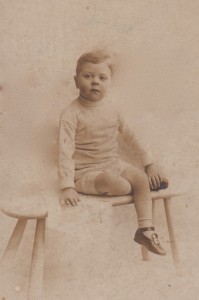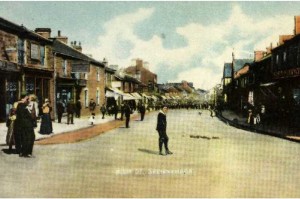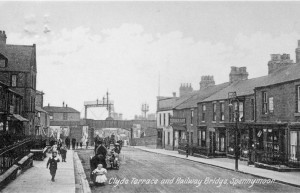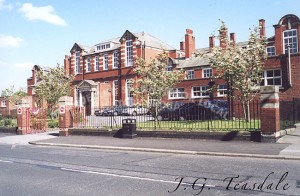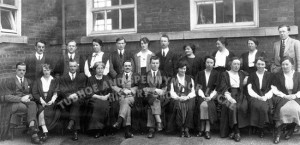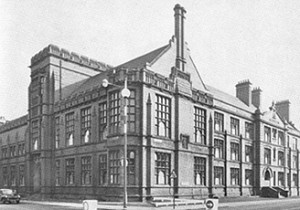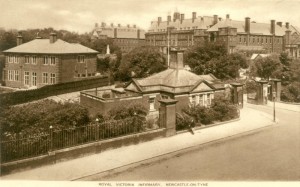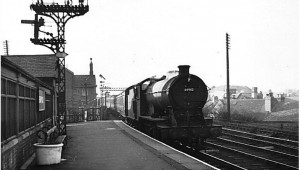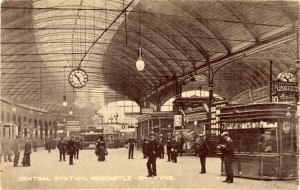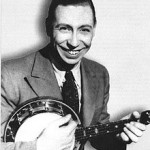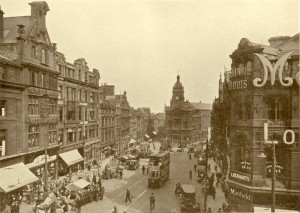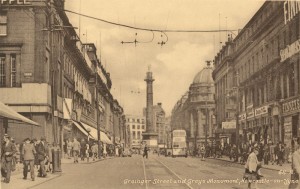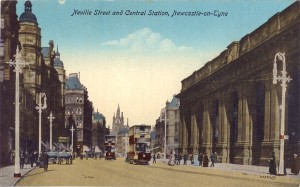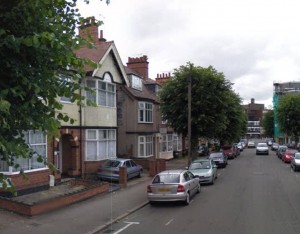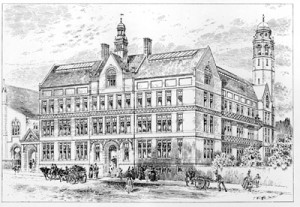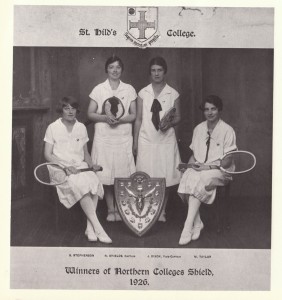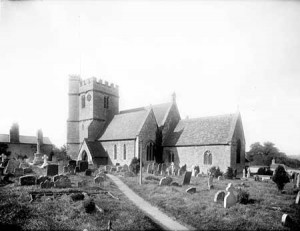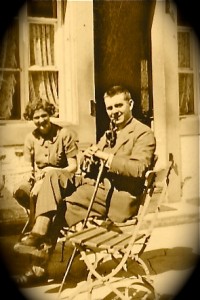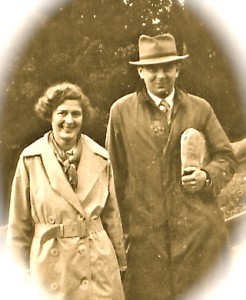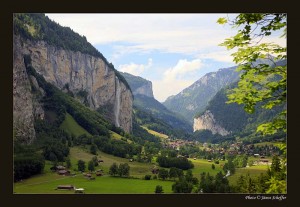Henry & Muriel
Henry Pearson McNamara and Alice Muriel Stringer
Henry
Henry spent his childhood in Spennymoor, County Durham. At the time it will have been a small town where the main industry was coal mining. For a substantial picture gallery and history see here and here.
Henry, the only son of Frank and Susannah, attended the secondary school in Spennymoor, presumably from about 1921. When he went there it was called the Alderman Wraith School. The school opened on April 22, 1912, as Spennymoor Higher Elementary School in Durham Road. It was renamed Alderman Wraith School, in honor of its founder and benefactor, in 1918 and gained full secondary status in 1921. Today the site is occupied by Tudhoe Grange Comprehensive School.
In about 1927 Henry left school and enrolled at The University of Durham College of Medicine at Newcastle upon Tyne. Family rumor has it that medicine was not his first choice profession and that he would have preferred to study law. However, his mother instead that he went to medical school.
The obvious explanation would be that the family had experienced the harmful effects of long term chronic illness with his father’s tuberculosis. The College Calendar for 1932 – 33 lists Henry Pearson McNamara as a student. In 1932 he had passed his MB & BS examinations with distinction in Public Health and Medical Jurisprudence and in 1931 he had obtained first class honours in Midwifery and Diseases of Women and Diseases of Children. He qualified at a very young age. As a student, living at home, he had to travel by train from Spennymoor to Newcastle every day and he received £1 a week to fund his travel to and from the University, his bowel of soup and bread at lunch and his pipe tobacco to which he became attached at the age of 17.
He also became President of the University of Durham Students’ Union. Newcastle Medical School was still a college of the University of Durham at that time. One claim to fame was that he booked George Formby, at the time a very popular comedian, silent film actor and banjo player, to entertain the students, but the day in question had turned out to be a Sunday and at the time the law prevented any form of lively entertainment, alcohol etc. on the Sabbath, however George Formby was unimpressed by the regulations and bent the law to deliver a show for the students.
Initially he probably wanted to be a hospital physician rather than a GP. After he qualified he held two hospital appointments, a medical post and a surgical post, at the Royal Victoria Infirmary in Newcastle. It was not necessary to do hospital jobs before becoming a general practitioner at this time. Unlike most junior hospital positions then, he was actually paid – £25 per year. He slept in a room above the wards and there was no such concept of ‘time off’. This indicates that he was destined for higher things in medicine. However to climb the medical ladder in those days a degree of independent income was necessary – which he did not have.
After these hospital appointments he did a variety of locums, one of which was in a Mental Asylum in County Durham where he was responsible for over 900 patients. Ward rounds consisted of standing at the end of a huge ward – gazing down the rows of beds and asking the nurses if there was anything he should do. There never was. He also did a variety of GP locums after qualifying. A couple of stories he told illustrate how very different medical practice was for a young medical practitioner in the 1930s. On one occasion he was asked by the village policeman to issue a Death Certificate for a local man who had been found dead. Much to the irritation of the policeman, and being typical of Henry, he refused on the grounds of not knowing why the man had died. However much to his surprise, although the doctor he was doing the locum for had virtually no medical equipment, he had a post mortem set of instruments. Henry therefore carried out a post mortem, in the garden shed on a sweltering hot day with the local children watching though the window. Sawing through the skull was hard going. As a result he was able to confirm the cause of death as a massive stroke.
Another story was that while working as a locum GP in a remote village he was called to deliver stillborn twins in the middle of the night. Recognizing the mother was Catholic, and being the man he was, he summoned the local priest. The first stillborn infant was delivered and the Priest administered the last rights. There was a long delay waiting for the second infant to be delivered. Eventually the Priest said ‘I’m off to bed – you can do the necessary for the second one’.
When Henry set out to develop his career he decided to move to Coventry. Durham and the North East were depressed areas with few prospects for work. While Coventry had a reputation as a coming boom town with, among other things, the developing car, artificial textile and machine tool industries. Also it was about mid-way between the homes of his family and his future in-laws. At first, before his marriage, he was living at 29 Friar’s Road, Coventry. For a library of pictures of Coventry in the 1930s and after see here.
When he first moved to Coventry Henry worked with, and may have been in partnership with, another doctor. Whatever the agreement was between the two of them, he believed the other party was not honoring the contract and decided to set up by himself. A bold thing to do as in those days as there were usually restrictive clauses in partnership agreements forbidding this type of action. The case went to court and he won the day.
Muriel
Muriel (she always used her middle name Muriel rather than Alice, usually abreviated to Miri) , the daughter of Arthur and Maud, spent her formative years in the Durham area. Following her primary education in Ferryhill Alice moved to Durham High School. For the history of Ferryhill see here and and for a substantial library of old photagraphs of Ferryhill and other Durham villages mentioned in the text see here and for a splendid set of old postcards here. After leaving school Alice was destined to become a domestic science teacher. She had no particular desire to become a teacher, least of all a DS teacher, indeed she had more literary interests. But, as was common at that time, parental direction held sway and her father insisted that it was an appropriate occupation for a woman. She attended the Northern Counties Training College of Domestic Science, colloquially known as Newcastle Pudding School.
In an exercise book her home address is given as the School House, Ferryhill and her college note books have dates in them ranging from 28 September 1928 to 21 March 1930. She would have been a student at Newcastle at the same time as Henry was a medical student there. Moreover, the college was situated in Northumberland Road, as was the Medical School,
Muriel was a member of the College tennis team and the photograph of their arch rivals, below, provides an idea of the dress and equipment at the time when Muriel was training to be a teacher.
Henry and Muriel had known each other as children and at one time attended the same school. However at school they were unable to communicate with each other because the boys’ and girls’ sections were separated by iron railings. At the time when Muriel was training, the domestic science course was the only three year teacher training course in the country, all other teaching certificate courses lasted two years. However, each year a few outstanding domestic science students were allowed to omit the final year and Muriel was one such student.
She began teaching in deprived areas in the North East. In common with all teachers during the depression she found that her salary was reduced as a result of the Geodes Axe, see here, and as a woman she was paid less that her male colleagues. When she married, as the law required at the time, she had to relinquish her teaching post.
Alice married Henry on 16 August, 1937 at St Andrews Church, Headington, Oxford. The local curate conducted the service which was held at 8 o’clock in the morning, because ‘they did not want a fuss’. They then travelled to Switzerland for their Honeymoon.
For those few people who could afford to travel abroad in the 1930s Switzerland was a popular destination. By 1937 shortly before the advent of the Second World War much of Europe was in political turmoil and not safe to visit and travel could be difficult. As a neutral country Switzerland was one of the few places where visitors could still expect a peaceful holiday. Or perhaps geography lessons at school provided the inspiration to visit Lauterbrunnen since the the valley where it is situated provides the standard school text book rift valley illustration.

